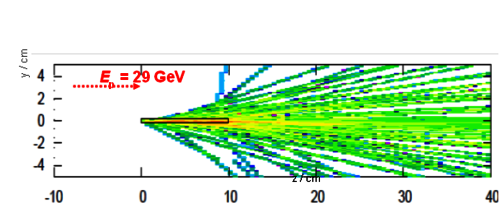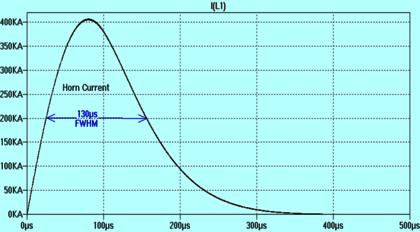The magnetic horn is a system for focusing antiprotons. Antiprotons are produced by shooting a proton beam (energy in our case ~29 GeV) onto a target.
In this way, antiprotons are produced. These leave the target as a divergent particle stream, as outlined in the picture:
This process is not particularly efficient, meaning the number of produced antiprotons is low. To direct all (or as many as possible) of the antiprotons to the experiment, the divergent beams must be transformed into a parallel beams, the antiprotons must be focused.
This is to be achieved with a magnetic horn. Fundamentally, it is a coaxial structure consisting of an inner conductor and an outer conductor. If a current flows through the inner conductor and back through the outer conductor, the magnetic field between the conductors can be used to deflect antiprotons.
In order to achieve the desired focusing, a current of ~ 400 kA is required. Furthermore, due to its high radioactive radiation level, the horn must be as far away from the power pulse unit as the electronics would otherwise be damaged. The resulting inductance of the overall system thus is comparatively large.
To achieve the required current of approx. 400 kA, a capacitor bank with a capacity of 2 mF is charged to approx. 14 kV. The stored energy is in the range of 200 kJ. This roughly corresponds to the kinetic energy of a car (~ 1400 kg) at 60 km/h.
The capacitor bank is discharged in a short current pulse. Such a current pulse is shown here:







